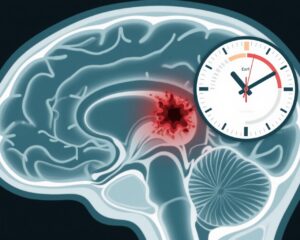Highlight
– Delirium affects 23% of acute general medicine patients, increasing with age.
– Major associated factors include dementia, frailty, comorbidity, and pre-admission dependency.
– Delirium significantly predicts longer hospital stays, increased discharge care needs, and mortality, with effects lasting up to 10 years.
– Outcomes are notably worse in patients aged 65-74 years without existing dementia, underscoring priority groups for intervention.
Study Background and Disease Burden
Delirium is an acute neuropsychiatric syndrome characterized by sudden onset of confusion and impaired attention, common among hospitalized patients, particularly older adults. Its occurrence signals vulnerability and often portends worse clinical outcomes including prolonged hospitalization, increased care dependency, and elevated mortality. Despite its clinical significance, reliable long-term data on delirium incidence, risk profiles, and outcomes across broad adult populations in acute medicine remain limited, hampering efforts to optimize care pathways and preventive strategies. This gap is critical given the aging global population and increasing dementia prevalence, conditions that amplify delirium risk.
Study Design
This longitudinal observational study was conducted at the John Radcliffe Hospital in Oxford, UK, encompassing six successive 8-week sampling periods between September 2010 and November 2018. It included 1,846 consecutive adults aged 16 to 102 admitted to the acute general (internal) medicine service. Delirium diagnosis was prospectively assessed with the Confusion Assessment Method and DSM-IV criteria, categorizing cases as either prevalent (within 48 hours of admission) or incident (developing after 48 hours). Data on demographics, dementia and comorbidity status, frailty, illness severity, and functional dependency were collected. Statistical analyses involved adjusted odds ratios (adjORs) for delirium associations with clinical variables and adjusted hazard ratios (adjHRs) for mortality over a 10-year follow-up.
Key Findings
Overall delirium prevalence was 23% (426 patients), with 68% prevalent and 17% incident cases. Notably, delirium occurrence rose markedly with age: 2% in patients under 50, 9% in ages 50–64, 20% in 65–74, 35% in 75–89, and 46% in those 90 or older. Among patients younger than 65 with delirium, 76% had underlying neurological or neuropsychiatric disorders. In patients aged 65 or older, delirium strongly correlated with dementia (adjOR 3.63), pre-admission dependency (adjOR 2.63), comorbidity burden (adjOR 1.04 per unit increase), and frailty (adjOR 3.62 moderate risk; 11.85 high risk, relative to low risk). Correlations were stronger in those without dementia than in those with dementia.
Clinically, delirium predicted hospital stays longer than 7 days (adjOR 2.48), increased discharge care requirements (adjOR 2.41), and higher inpatient mortality (adjOR 2.45). The heightened mortality risk was most pronounced immediately after admission but persisted over 10 years (adjHR 2.03 for 30-day mortality and 1.52 for 10-year mortality). Excess mortality was greater among younger older adults (65–74 years) and in those without dementia compared to patients with dementia.
Expert Commentary
This large-scale, prospective, and longitudinal design affords robust insights into delirium epidemiology in general medicine, capturing both early and incident cases. The study validates current UK and international guidelines advocating delirium screening for all patients aged 65 and older at hospital admission. Particularly striking is the finding that delirium’s adverse outcomes are disproportionately more severe in the 65–74 age group without dementia—underscoring that this cohort may represent a crucial target for focused delirium prevention, detection, and intervention strategies. Differences in delirium associations between patients with and without pre-existing dementia suggest distinct pathophysiological or vulnerability pathways warranting tailored approaches.
Limitations include single-center data which may impact generalizability, and potential confounding by unmeasured variables such as medication use or environmental factors. Nonetheless, the extended 10-year follow-up period significantly strengthens the evidence base on delirium’s long-term impact.
Conclusion
This longitudinal observational study highlights delirium as a common and serious complication in acute general medicine, strongly related to age, frailty, dementia, and comorbidities. The study supports routine on-admission delirium screening beginning at age 65, with an emphasis on the 65-74 age group without dementia where outcomes are most adverse. These findings provide a compelling rationale for prioritizing clinical trials and interventions to mitigate delirium’s impact, ultimately improving hospital resource allocation, patient trajectories, and health policy frameworks.
References
Gan JM, Boucher EL, Lovett NG, Roche S, Smith SC, Pendlebury ST. Occurrence, associated factors, and outcomes of delirium in patients in an adult acute general medicine service in England: a 10-year longitudinal, observational study. Lancet Healthy Longev. 2025 Jul;6(7):100731. doi: 10.1016/j.lanhl.2025.100731. PMID: 40754365; PMCID: PMC12316638.



